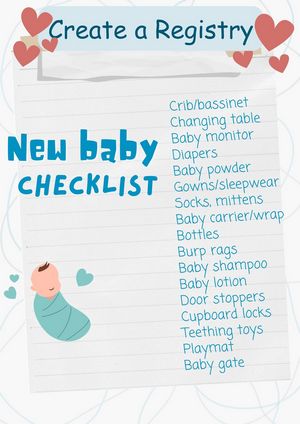Key Takeaways
- Having a solid support system can ease the physical and emotional challenges of labor.
- Proper nutrition and regular exercise prepare your body for childbirth.
- Preparation helps reduce anxiety and makes labor more manageable.
- A well-thought-out birth plan guides your decisions during delivery.
- Learning pain management strategies like breathing techniques can help during labor.
Educating Yourself About Childbirth
Labor and Delivery Stages
Labor progresses through three key stages: early labor, active labor, and the final stage when your baby is delivered.
Early labor often starts with mild contractions, which become more intense in active labor. The third stage occurs when you begin pushing, leading to the birth of your baby.
Knowing these stages in advance prepares you mentally for what lies ahead.
Childbirth Classes
Attending childbirth classes can give you helpful tools and knowledge. Whether it’s Lamaze, Bradley Method, or Hypnobirthing, each class offers unique ways to manage labor.
You can also learn breathing techniques, pain relief options, and how to handle different scenarios that might occur during delivery.
Creating a Birth Plan

Outlining Your Preferences
A birth plan allows you to communicate your preferences for pain relief, delivery methods, and other decisions during labor.
It may include your thoughts on whether to use an epidural or opt for natural pain relief methods.
This plan should also list who you want present during labor, your desired birth positions, and any specific requests regarding medical interventions.
Discussing Your Plan with Your Provider
Sharing your birth plan with your healthcare provider ensures that everyone is on the same page.
They can help clarify certain medical aspects and let you know what to expect based on your specific health needs.
While having a plan is essential, staying flexible is equally important, as labor can be unpredictable.
Physical Preparation for Childbirth

Nutrition and Hydration
A healthy diet supports both you and your baby. Eating bioavailable nutrient-dense foods such as meats, eggs, and well cooked seafood provides the necessary fuel for labor.
Staying hydrated is also important, as dehydration can cause fatigue and slow down the process. Drinking plenty of water before and during labor keeps your body functioning well.
Prenatal Exercises
Staying active during pregnancy helps build the strength and endurance needed for childbirth. Simple activities like walking, swimming, or prenatal yoga improve muscle tone and stamina.
Exercises that focus on the pelvic floor and core muscles, such as squats, can help make labor easier and promote a quicker recovery.
Pain Management and Breathing Techniques

Breathing Techniques
Controlled breathing can make a significant difference during contractions. Techniques such as deep, slow breaths help you stay calm and manage pain.
Practicing these techniques during pregnancy can help you use them effectively during labor. Focusing on your breath distracts from the intensity of contractions and keeps your body relaxed.
Pain Relief Options
Several pain relief options are available during labor. Some women prefer natural methods like massage, movement, and warm baths, while others choose medical interventions like epidurals or IV pain relief.
Understanding each method helps you decide which option is best for you, depending on your pain tolerance and preferences.
Building a Support System
The advice and care that women receive around where to plan their place of birth, pain relief during labour, and management of labour affect their health.
— The BMJ (@bmj_latest) February 1, 2024
This article summarises new and updated recommendations from NICE, with a #BMJInfographic https://t.co/uCUuolt313 pic.twitter.com/e9UUBYIsrC
Choosing Your Birth Team
Selecting a supportive birth team can ease the emotional and physical challenges of labor. Your partner, family members, or a doula can provide much-needed comfort during this time.
A doula, for example, offers emotional support and practical advice during labor, helping you stay focused and calm.
Partner Involvement
Your partner plays an important role throughout labor. They can assist with breathing exercises, provide emotional reassurance, and help communicate with medical staff.
Attending childbirth classes together ensures that both of you are prepared for the experience and can work as a team.
Packing for the Hospital or Birth Center
What to Pack for Yourself
Packing your hospital bag ahead of time ensures that you have everything you need during labor.
Include comfortable clothing, maternity gowns, and any personal items that will make you feel more at ease.
Essential toiletries, your birth plan, and important documents like insurance information should also be included.
Baby Essentials
You’ll need a few key items for your newborn, such as clothing, diapers, and a blanket. A properly installed car seat is required for the trip home.
It’s a good idea to pack outfits in a couple of sizes since newborns can vary in size at birth.
Mental and Emotional Preparation
Reducing Anxiety
It’s common to feel nervous as childbirth approaches. Mental preparation can make a difference in how you handle labor.
Visualization techniques, meditation, and focusing on positive birth experiences can reduce fear and anxiety. Feeling confident in your body’s ability to give birth helps you stay calm during labor.
Postpartum Expectations
It’s helpful to prepare emotionally for the postpartum period as well. Recovery from childbirth can take time, and knowing what to expect helps you adjust more easily.
Hormonal changes, sleep deprivation, and physical recovery are common in the first few weeks. Support from your partner, family, or healthcare provider can make this transition smoother.
Conclusion
Preparation is key to a smooth childbirth experience. Educating yourself about labor, creating a birth plan, and building a supportive team all contribute to a positive delivery. Ensuring physical readiness through proper nutrition and exercise will help your body handle labor effectively. Managing your mental and emotional health will allow you to approach childbirth with confidence and calm.
FAQs
What should be included in a birth plan?
A birth plan should include your preferences for pain management, delivery methods, labor positions, and any medical interventions you want or wish to avoid.
When is the best time to start preparing for childbirth?
It’s ideal to begin preparing during the second trimester, giving you plenty of time to attend classes, create a birth plan, and practice pain management techniques.
How can a doula assist during labor?
A doula provides emotional support, guidance, and physical comfort during labor. They help with pain management techniques and act as an advocate for your birth preferences.
How can my partner help during labor?
Your partner can assist by providing emotional support, helping with breathing exercises, and communicating your needs to the healthcare team.
Are childbirth classes necessary?
Childbirth classes offer valuable knowledge about the labor process, pain management, and what to expect. These classes help both you and your partner feel more prepared and confident during the delivery.

Natural Childbirth: Pain Management & Breathing
Key Takeaways Natural childbirth focuses on managing labor without medical interventions. Breathing techniques help alleviate pain and keep the body relaxed. Movement, positioning, and hydrotherapy…
9 Vital Travel Tips for Pregnant Women
Key Takeaways Consult Your Doctor: Always discuss travel plans with your healthcare provider to ensure safety throughout your pregnancy. Pack Smart: Essential items for pregnant…
Postpartum Recovery: What Happens After Childbirth
Key Takeaways Postpartum recovery can take weeks or months depending on the type of birth. Physical recovery includes managing pain, bleeding, and any tearing or…
What is the Best Nutrition for Pregnancy?
Key Takeaways Eating wisely during pregnancy impacts maternal and fetal health. Prioritize foods with a high bioavailability of nutrients. Essential fatty acids support brain and…
Gestational Diabetes Management: Expert Tips for Success
Key Highlights Gestational diabetes, marked by glucose intolerance during pregnancy, requires careful blood sugar control. A healthy pregnancy with gestational diabetes includes regular exercise, a…
Pre-Eclampsia: Causes, Symptoms, and Treatment
Key Takeaways Pre-eclampsia involves high blood pressure and organ damage after 20 weeks of pregnancy. Early diagnosis through regular prenatal care is vital for managing…
Birth Plan Guide: Planning Your Birth Experience
Key Takeaways A birth plan outlines your preferences for labor, delivery, and postpartum care. It helps communicate your wishes to your healthcare team. Flexibility is…
Breast Milk or Formula: Which Is Healthier for Your Baby?
Key Highlights Breast milk is ideal for infants, offering essential nutrients, cognitive development support, and immune strengthening. Breastfeeding benefits both baby and mother, reducing the…









